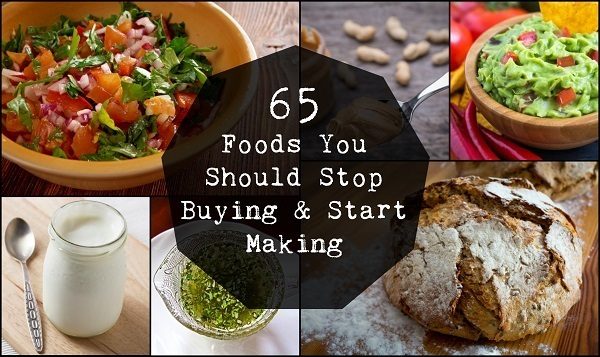
The growing movement toward traditional foods – that is, foods that are whole, real, and rich in nutrients – is really a return to earlier times when convenience foods simply did not exist.
The shift from whole foods to commercially-prepared fare has been quite dramatic and has altered our relationship with the stuff that sustains us. Our great grandparents would likely look on in amazement at all the frozen, canned, processed, refined, and ready-to-eat foods that line the grocery store shelves today.
It wasn’t all that long ago that a vegetable garden was just as essential a part of the household as the kitchen – living off the land wasn’t a pastime, but an absolute necessity. What wasn’t raised on the homestead – milk, eggs, meat, and dry goods like flour, for example – was procured locally and seasonally from farmers and merchants in the community. The seasons of life determined what was eaten and when (i.e., there was no such thing as strawberries in December), and what could be preserved for winter was meticulously ordered and stowed in cans or jars.
Going back to basics and preparing more foods from scratch helps reestablish the lost connection between the substance of our sustenance. Lacking the synthetic additives so ubiquitous in ready-made products, traditional foods are far more nutritious, deeply nourishing, superior in taste, and exceedingly fresh. In addition to exercising more control over what goes into your mouth, you’ll save a heap of money making these food staples yourself, and at the same time, become a little more self-sufficient.
While the last century has shaped where our food comes from, all the way down to the molecular level, preparing foods traditionally is still very much within our abilities. Making these recipes won’t eat up too much of your time and many are so incredibly easy to prepare that you might wonder why you haven’t been doing it all along!
(To maintain food integrity, we recommend using only organic foods as ingredients for these recipes. And you may also want to read our article on buying organic on a budget for some excellent cost-saving tips.)
Bread
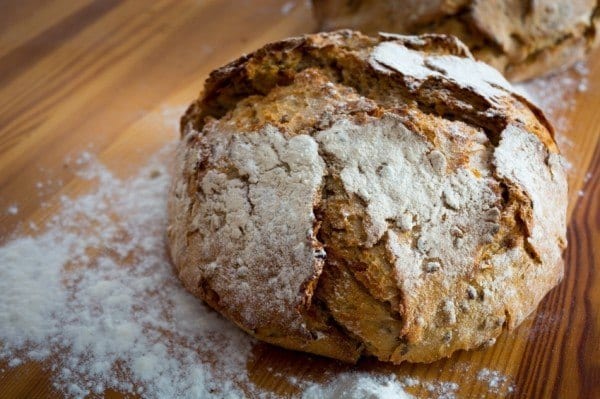
The original staple food, bread making goes back at least 30,000 years when unleavened bread was a simple mixture of water and wheat flour. Since then, more than 150 varieties of bread have emerged, spanning as many flavors and textures.
Averaging about 30 minutes or less of hands-on prep time, homemade bread will taste so much better than your run-of-the-mill Wonder Bread. And the cost to make is significantly less than purchasing $6 artisan loaves from the bakery!
White Bread
This Amish recipe is slightly sweet and dense enough to bear the load of an abundance of toppings and sandwich fillings. For a fluffier version, try halving the sugar.
Whole Wheat Bread
Moist and light, what makes this 100% whole grain wheat bread different from the rest is that, unlike other brown bread recipes, it doesn’t suffer from the sins of undue heaviness and dryness.
Sourdough Bread
Naturally leavened with wild yeast, this sourdough recipe is soft and moist on the inside, crunchy on the outside.
Rye Bread
Tart and chewy, perhaps the secret to this authentic New York Jewish Deli rye bread lies in the sour pickle juice…
French Baguette
These long and lean loaves require only five basic ingredients (flour, yeast, salt, sugar, and warm water).
Naan Bread
To make naan bread moist and bubbled, you should proof the yeast before combining the ingredients.
Focaccia Bread
Fragrant and infused with herbs, focaccia is another flat bread that benefits from proving the yeast first.
Jalapeno Cheddar Cornbread
A hearty meal unto itself, this Southern-style delicacy is yummy on its own or as a savory side dish.
Braided Egg Bread
While this recipe might appear a little intimidating to the novice bread maker, it is actually quite easy to pull off! Soft and airy, braided egg bread will appear as though it was prepared by a professional baker.
Peanut Butter
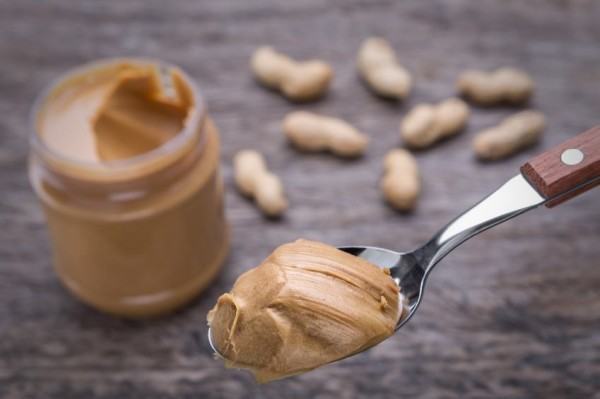
You may not realize just how ridiculously easy it is to make your own peanut butter. At its most basic, all you need is a quantity of unsalted roasted peanuts (or cashews or almonds), a food processor or blender, and five minutes of your time. That’s it!
Homemade PB is nuttier and more flavorful than commercially prepared peanut butter, and of course, making it at home is a pure process – no added sugars, hydrogenated oils, or synthetic acids.
Peanut Butter Recipe
To make about 1 ½ cups of peanut butter, pour 2 cups of roasted peanuts in your food processor. Let the food processor run for about five minutes, stopping it intermittently to scrape the sides of the bowl. The peanuts will change from whole nuts to crumbly bits to a paste-like consistency. Around the five minute mark, it will magically transform into creamy, spreadable peanut butter. Transfer to a glass jar and stow in the refrigerator.
For Chunky PB
Pulse a cup of peanuts and mix it in to your finished peanut butter.
For Sweeter PB
Add two teaspoons of honey to the finished peanut butter while it’s still in the processor and pulse for an extra minute.
For Saltier PB
Add ½ teaspoon of sea salt and pulse.
For Super Creamy PB
Add 1 to 2 tablespoons of peanut oil and pulse.
For Nuttier Tasting PB
Toast the peanuts in the oven before adding them to the food processor. Set the oven to 350?F, spread the nuts on a cookie sheet, and bake for 10 minutes.
Make it Your Own
By adding cocoa powder, cinnamon, chocolate chips, maple syrup, or raisins.
Mayonnaise
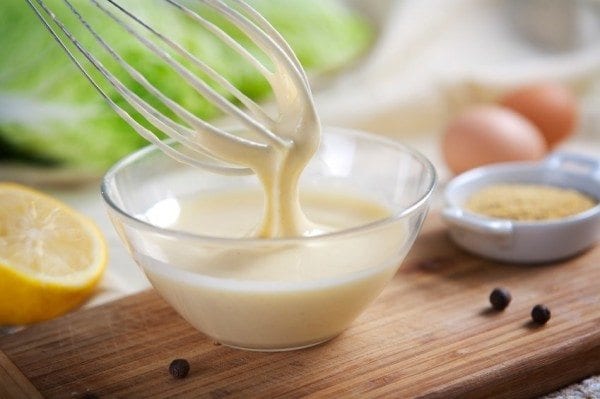
The transformation from a cup of clear liquids to thick and creamy mayonnaise is really a sight to behold! The key to making mayonnaise is in the emulsion, and although you can mix the ingredients together with a whisk or a blender, the fastest method to make your own mayo is by using an immersion blender.
When using a whisk or blender, the trick to properly emulsify the ingredients together is to slowly, slowly drizzle in the oils, one teaspoon at a time. With a handheld mixer, you can drop in all the ingredients at once in the blending cup, and in one minute, you’ll have zingy mayo.
And while olive oil and canola oil are often paired for the mixing of mayo, you can use practically any oil combinations you like. Unless you’re a bit of a mayo fanatic, make mayonnaise in smaller quantities since it will only keep for about a week in the fridge.
Classic Mayonnaise
Using whole eggs, white vinegar, salt, mustard powder, and oil, this recipe works best when all the ingredients are at room temperature before combining.
Low-Fat Mayo
This lower calorie recipe (70 calories per tablespoon) uses less oil and incorporates non-fat sour cream instead.
Eggless Mayonnaise
You don’t necessarily need to break a few eggs to whip up some mayo.
Miracle Whip Copycat Recipe
It’s not mayonnaise per se, but many still love this mayo-like dressing.
Salad Dressing
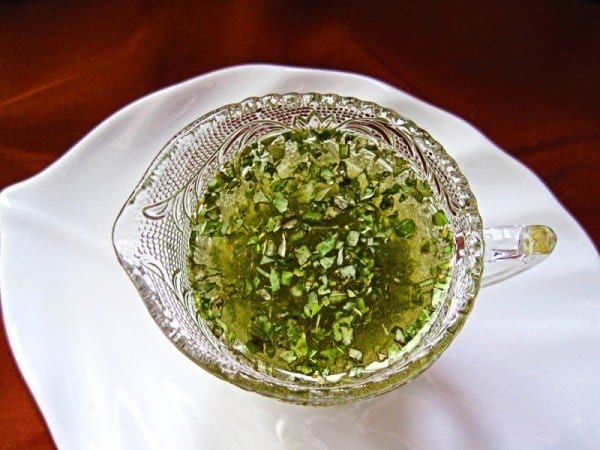
Making salad dressings from scratch is as simple as tossing the ingredients into a bottle and giving it a vigorous shake. There are so many creamy toppings and aromatic vinaigrettes to choose from to elevate your greens into a salad masterpiece. Here are some excellent traditional dressings to try:
You can find even more recipes here and here. And be sure to check out this handy vinaigrette infographic that outlines the proper oil, acid, seasoning, and flavor proportions for experimenting with your own custom-made dressings.
Spice Mixes
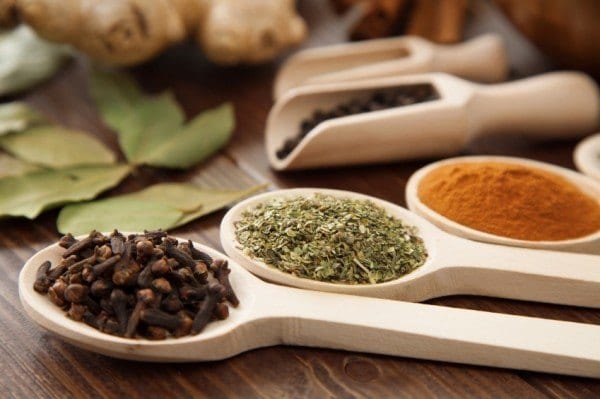
You pay a premium when you have your spice blends pre-mixed for you, and when you do it yourself, you can be sure they won’t contain MSG, calcium silicate, disodium inosinate, among other unnecessary add-ins.
-
Chili Powder
-
Taco Seasoning
-
Creole Cajun
-
Curry Powder
-
Jerk Seasoning
-
Montreal Steak Spice
-
Italian Seasoning
-
Chinese Five Spice
-
Adobo Seasoning
-
Baharat
-
Chicken Seasoning
-
Pumpkin Spice
Ketchup
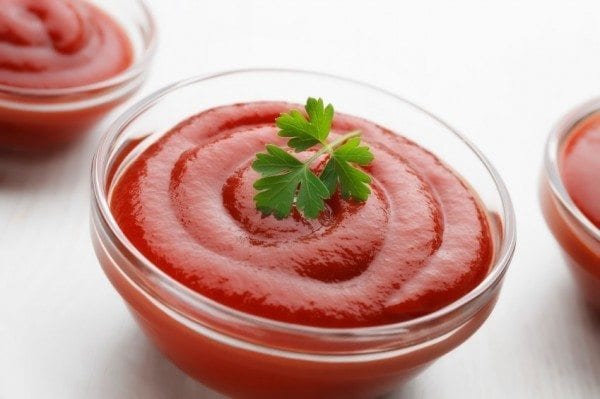
Unlike anything you can buy at the store, homemade catsup is so much healthier and tastier than those made with GMO tomatoes and high fructose corn syrup. Buy organic tomatoes (or better yet, grow your own) and use these ketchup recipes as a condiment, tomato sauce, and marinara.
Basic Ketchup Recipe
A no-nonsense 6-ingredient recipe for classic tomato ketchup.
Ketchup with Hidden Veggies
Able to completely mask the presence of carrots and zucchini, you can sneak in some extra nutrients and your household will be none the wiser.
Slow-Cooker Ketchup
Just set it and forget it with this 12-hour crock pot ketchup.
Artisan Ketchups
Gussy up your ketchup flavorings with curry, sweet chili, balsamic, and more.
Pickles
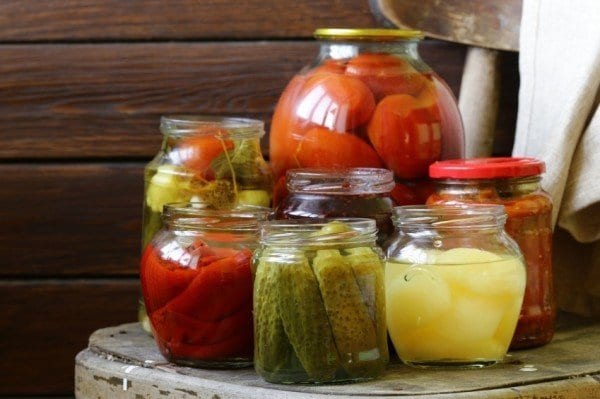
Usually when we think of pickles, what comes immediately to mind are cucumbers that have luxuriated in dill brine. In truth, pickles are any fruit or vegetable that have been steeped in an acid (white vinegar or apple cider vinegar, for instance) along with salt, spices, and herbs. If you want to move past a fixation with cukes, try giving cauliflowers, carrots, bell peppers, peaches, grapes, chilis, or bananas a good pickling.
Traditional Pickles
Intended for the long haul, these pickles use the water bath canning method to ensure they last for up to one year.
Refrigerator Pickles
Eating up a mere 15 minutes of prep time, fridge pickling is best for those who can (and will) consume all their pickles within a month.
Salsa
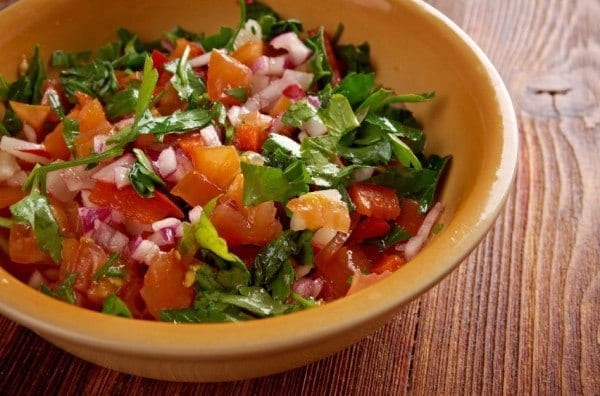
Meaning simply “sauce” in Spanish and Italian, salsa can be raw or cooked, chunky or pureed, and can incorporate many fruits and veggies beyond the traditional tomato.
Salsa Fresca
A time-honored favorite, this salsa uses raw, chopped tomatoes, onions, chiles, and fresh cilantro.
Salsa Verde
Owing its vibrant green hue to the tomatillo, this recipe includes instructions for both raw and cooked salsa verde versions.
Salsa Roja
Very similar to salsa fresca, this red sauce recipe is cooked and served warm.
Habanero Salsa
Not for the faint of heart, this salsa is hot, hot, hot.
Peach Salsa
In addition to using fresh peaches, this nouveau salsa includes mint leaves and fresh ginger.
Watermelon Salsa
A cool and refreshing dip for a hot summer day!
Dairy
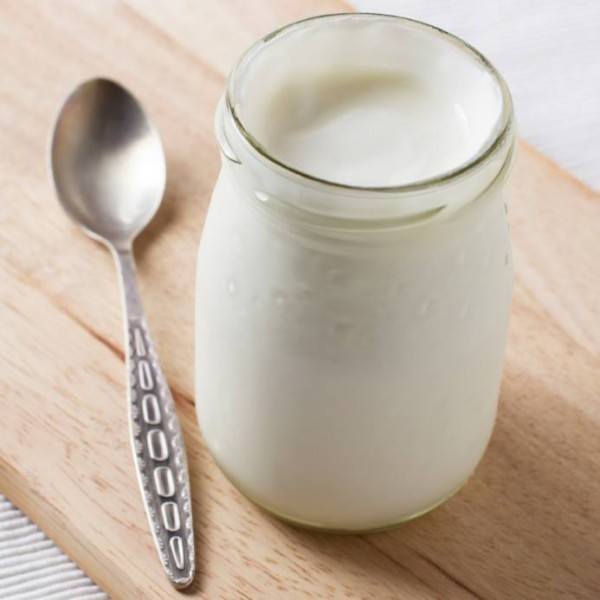
By fermenting milk, you can make a multitude of cultured dairy products on the cheap. Check out these amazing milk tweaks:
Yogurt
To make yogurt at home, all you need is milk and live active cultures Lactobacillus bulgaricus and Streptococcus thermophilus which can be found in store-bought yogurts or by purchasing a yogurt starter. Tip: Once you’ve made your first batch, save a few tablespoons of it as a starter for your next batch.
Greek Yogurt
When you make homemade yogurt, you are just a couple more steps away from Greek yogurt. Pour the finished and cooled yogurt into a colander lined with cheese cloth and let it strain for at least four hours. Be sure to place a bowl beneath the strainer to catch the whey.
Ricotta Cheese
Why bother with the whey? Because it can be used to whip up some fresh ricotta cheese.
Tzatziki
You can also use your freshly-made Greek yogurt as a base for creamy tzatziki sauce.
Sour Cream
Three ingredients – whole milk, white vinegar, and heavy cream – are all that’s needed to make sour cream at home.
Butter
Pour heavy cream into a mason jar, screw on the lid, and get shaking – no butter churn required!
Sauces & Dips
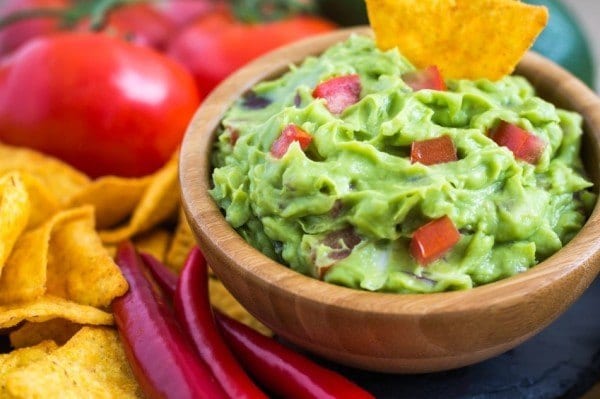
Barbecue Sauce
A sweet and spicy sauce that can be made in the time it takes to warm up the barbie.
Hot Sauce
Emeril Lagasse’s recipe for red hot, hot sauce will last for up to six months in the fridge.
Hummus
Save the $5 and make this authentic hummus recipe yourself.
Guacamole
Offering yet another way to get your daily avocado fix.
Chutney
A collection of 30 chutney recipes including mango, peanut, coconut, curry, and coriander.
Maple Syrup
For a sugary treat, maple syrup is super easy to make and costs only around $0.50 per bottle! While this recipe calls for Mapeleine, we recommend using pure maple extract instead.
